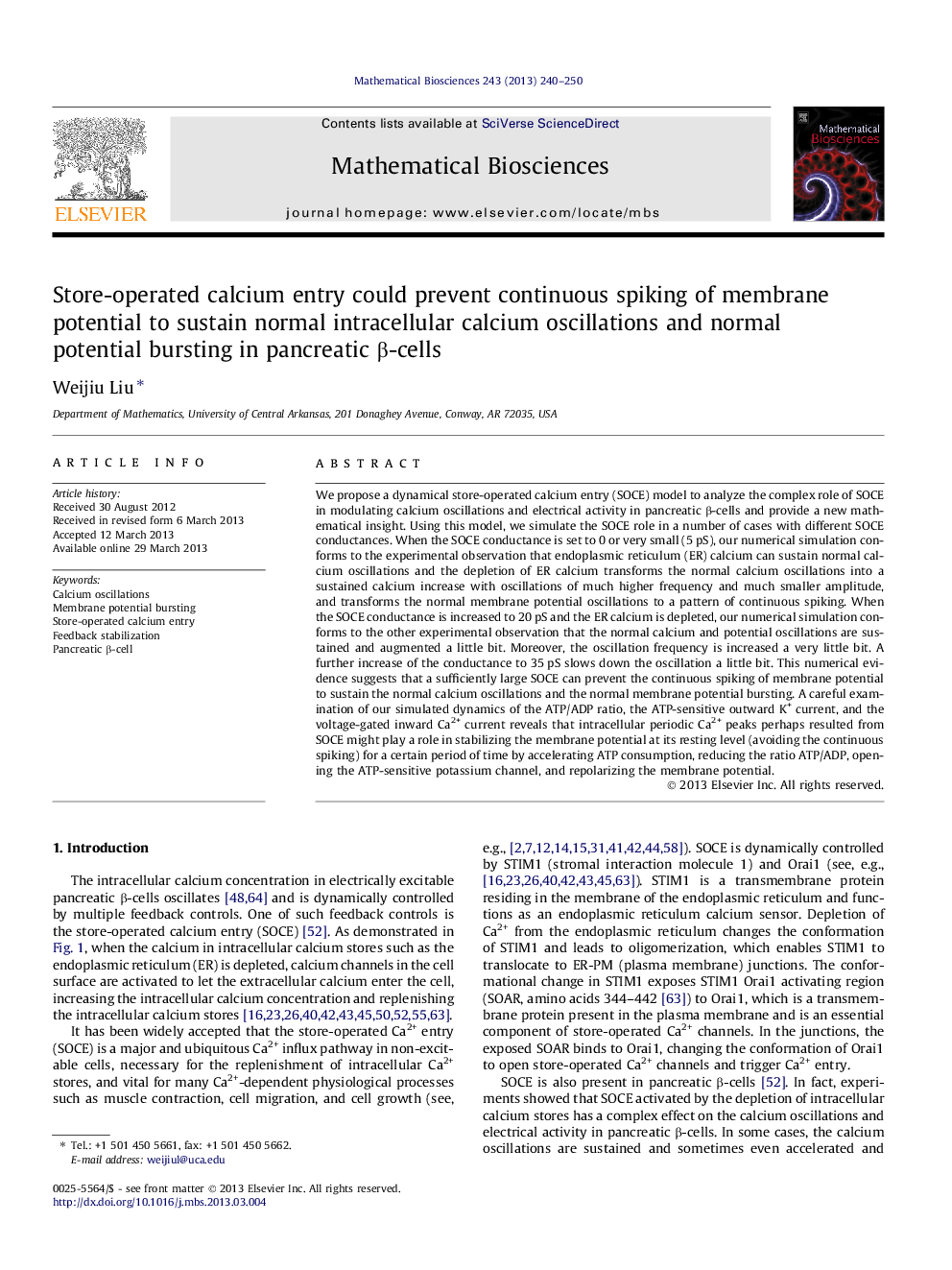| Article ID | Journal | Published Year | Pages | File Type |
|---|---|---|---|---|
| 4500217 | Mathematical Biosciences | 2013 | 11 Pages |
•SOCE could prevent continuous spiking of membrane potential.•SOCE could promote the opening of ATP-sensitive potassium channels.•SOCE could maintain the closure of voltage-gated calcium channels for certain time.•SOCE could stabilize the membrane potential at its resting potential for certain time.
We propose a dynamical store-operated calcium entry (SOCE) model to analyze the complex role of SOCE in modulating calcium oscillations and electrical activity in pancreatic β-cells and provide a new mathematical insight. Using this model, we simulate the SOCE role in a number of cases with different SOCE conductances. When the SOCE conductance is set to 0 or very small (5 pS), our numerical simulation conforms to the experimental observation that endoplasmic reticulum (ER) calcium can sustain normal calcium oscillations and the depletion of ER calcium transforms the normal calcium oscillations into a sustained calcium increase with oscillations of much higher frequency and much smaller amplitude, and transforms the normal membrane potential oscillations to a pattern of continuous spiking. When the SOCE conductance is increased to 20 pS and the ER calcium is depleted, our numerical simulation conforms to the other experimental observation that the normal calcium and potential oscillations are sustained and augmented a little bit. Moreover, the oscillation frequency is increased a very little bit. A further increase of the conductance to 35 pS slows down the oscillation a little bit. This numerical evidence suggests that a sufficiently large SOCE can prevent the continuous spiking of membrane potential to sustain the normal calcium oscillations and the normal membrane potential bursting. A careful examination of our simulated dynamics of the ATP/ADP ratio, the ATP-sensitive outward K+ current, and the voltage-gated inward Ca2+ current reveals that intracellular periodic Ca2+ peaks perhaps resulted from SOCE might play a role in stabilizing the membrane potential at its resting level (avoiding the continuous spiking) for a certain period of time by accelerating ATP consumption, reducing the ratio ATP/ADP, opening the ATP-sensitive potassium channel, and repolarizing the membrane potential.
